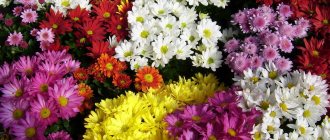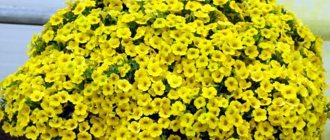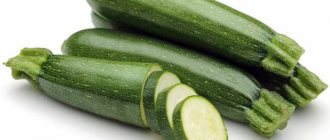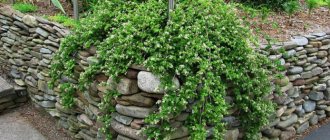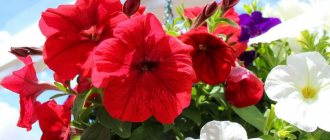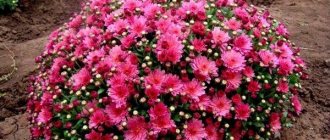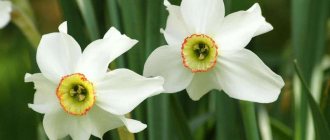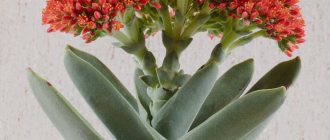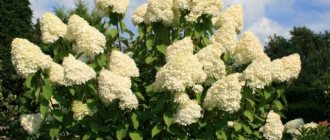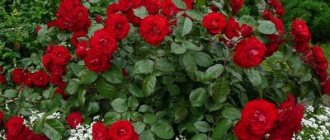August is the time for hydrangea to bloom. Many gardeners fall in love with this charming shrub precisely during this period, when it is impossible to take your eyes off the plant, and the desire to get this beauty into the garden becomes irresistible.
In the climatic conditions of northwestern Russia, several types of hydrangea are grown, which are represented by a large number of varieties for every taste and choice. To make it easier for you to navigate, we have prepared an overview of the most interesting and popular of them.
Hydrangea is one of the ten most popular garden plants in the world
Follow us:
Tree hydrangea (Hydrangea arborescens)
Hydrangea tree variety Annabelle (Annabelle)
Let's start with the most frost-resistant and unpretentious tree hydrangea . It is a deciduous shrub up to 1.5-2 m high with large heart-shaped leaves. The inflorescence is spherical, up to 20-25 cm in diameter, collected from creamy white flowers. The flowers last from July until late autumn, but by the end of summer they acquire a greenish tint.
The most popular varieties of tree hydrangea :
- Annabelle;
- Grandiflora;
- White Dome;
- Pink Percussion;
- Sterilis;
- Bella Anna;
- Incredible;
- Invincibelle Spirit.
Varieties of hydrangea
At this point in time, there are around 80 varieties of hydrangea. The main difference of this shrub is its large leaves of a rich green hue and large spherical inflorescences in a variety of colors. In the center there are small fruit flowers, which after a certain amount of time form boxes with seeds. And along the edges of the inflorescences there are quite large flowers that are not capable of producing fruits, and also along the edge there are several enlarged sepals. In general, this flower does not require a lot of attention to itself when caring. There are several varieties of hydrangea, but the most favorite are: large-leaved (or garden), tree-like and paniculate. It is these varieties that are actively in demand among flower growers. Although recently our gardeners have begun to actively breed such rare species of this shrub as oakleaf and petiole. Let's take a closer look at the most famous and common types of hydrangeas below.
Hydrangea paniculata
Hydrangea paniculata
The previous species is accompanied by the same persistent hydrangea paniculata . It got its name from the shape of its inflorescences. Some of the flowers in the inflorescence are unattractive, the small ones are fertile , and the most beautiful and large (sterile) are sterile white or cream flowers. Fragrant inflorescences are readily visited by butterflies.
Hydrangea paniculata variety Pinky Winky
Among the numerous varieties of paniculate hydrangea, there are also the most unusual:
- Kyushu large sterile white flowers that serve to attract insects.
- The Limelight variety has beautiful fluffy inflorescences consisting only of sterile large flowers. As autumn approaches, they turn greenish, like a lime fruit.
- Very attractive varieties are those that turn pink in the fall, for example, Grandiflora .
- The Vanille Fraize variety has beautiful white and pink inflorescences.
- Pinky Winky variety looks great . Its inflorescence, consisting mainly of small fruiting flowers, is decorated with a large number of large butterfly flowers, which at the beginning of flowering are pure white, then change color from pale to bright pink, and by autumn they become red-purple. The decorative effect is enhanced by the biological feature of hydrangea: the flowers in the panicle do not bloom simultaneously, but gradually, over one to two weeks, starting from the lower ones. The upper ones are blooming like a white-winged butterfly, the middle ones are already beginning to turn pink, and the lower ones are turning purple.
- Phantom;
- Bobo;
- Polar Bear;
- Pink Diamond;
- Fraise Melba;
- Wim's Red.
Varieties of hydrangea grown in Russian gardens
- Anabelle is the most common of the tree hydrangea varieties. It was released quite a long time ago. The bush grows small and compact, its height is about one and a half meters. The crown is spreading and dome-shaped, reaching a diameter of 3 m. The stem is bare and gray in color. The leaves are very large, up to 30 cm in length, bright, rich green in color with a finely toothed edge. Until frost, the foliage retains its color. The flowers are white, round, about 2 cm in size, grouped into inflorescences-balls with a diameter of up to 30 cm. The flowering period is from early summer to September. The bush is characterized by rapid growth of up to 10 cm per year. Frost-resistant. Prefers slightly shaded areas.
- Grandiflora is a magnificent bush of tree-like hydrangea with a spherical crown, up to 2 m in height and up to 3 m in diameter. The leaves are green, ovate, up to 10 cm. It blooms in corymbose inflorescences of small flowers. During the entire flowering period from July to September, the color of the flowers changes several times. At first they are light green, then turn white, and towards the end they acquire a creamy tint. Growth per year is up to 30 cm. The plant prefers sunny places with slight partial shade. Grandiflora loves moist soil and does not tolerate drought. Moderately frost-resistant variety.
- The tree hydrangea shrub of the Sterilis has a rounded shape and reaches a height of 2-3 m. The foliage is green on top and has a bluish tint on the underside. The leaves are slightly serrated and up to 20 cm long. Its annual growth is about 20 cm. The inflorescences are dense, hemispherical in size, about 25 cm in size. The bush blooms with sterile light green flowers, which turn white over time. The plant prefers well-drained fertile soils, sunny areas with slight partial shade. The winter hardiness of the variety is average.
- Kyushu - a variety of paniculate hydrangea. The bush has a fan-shaped crown up to 3 m in size and grows up to 2.5-3 m. The stems are colored red-brown. The leaves, pubescent, rich green in color on red petioles, are ovoid in shape. White flowers are collected in a wide panicle 15-25 cm long. Sterile flowers up to 2-3 cm consist of 4 white petals, which later turn pink. Honey bush. The plant does not tolerate stagnation of moisture in the soil and strong dry winds. The variety is fast growing and prefers partial shade. Frost resistance is good down to -25 degrees.
Annabelle
Grandiflora
Sterilis
Kyushu
- Vanilla Fraze is a very spectacular variety of paniculate hydrangea. It is a low bush with dark green foliage. The leaves are ovate and rough. It has very beautiful cone-shaped inflorescences up to 30 cm, distinguished by their color. At the beginning of flowering they are white, and by September the bottom of the cone-inflorescence acquires a pink-strawberry hue, and the top remains white. A fast-growing plant that recovers well after freezing. The shrub is able to withstand low temperatures down to –40 degrees.
- Lime Light is a fairly popular variety of paniculate hydrangea, memorable for its lime-colored inflorescences. Gradually, the color of the cone-shaped inflorescences acquires a light lemon or white tint, and by autumn it turns slightly pink. The foliage is velvety dark green. The bush has very strong stems that can support the weight of large inflorescences. The variety does not require various supports and tying. The plant grows up to 2 m in height and width. Growth per year is about 25 cm. Prefers sunny and moist areas. Frost-resistant, young bushes should be covered in winter.
- Pinky Winky - Belgian variety of paniculate hydrangea. The variety is famous for its bright colors of flowers and leaves. An important feature of the variety is its strong shoots, so the plant does not need support. The bush of this variety is small and compact, the crown has a rounded shape. The inflorescences are cone-shaped panicles of white color in autumn, acquiring purple tones. Their color changes gradually, which makes it possible to observe flowers of different tones in one panicle. The leaves are dark green and have pubescence along the veins. The foliage also turns red-purple in autumn. Young bushes need shelter during the cold season. Adult plants tolerate frosts down to -25 degrees.
Vanilla Fraze
Limelight
Pinky Winky
White Ball
Romance Blue
Endless Summer
- White Ball is a frost-resistant bush of a large-leaved variety up to a meter high. It blooms with spherical inflorescences of snow-white color. The foliage is rich green and large. Flowers appear on young shoots and shoots from the previous year. Prefers sunny places with slight partial shade.
- Romance Blue is a winter-hardy variety of large-leaved hydrangea. The plant grows up to 1.5 m. It blooms on the shoots of the new and last season with spherical inflorescences about 25 cm in diameter. Double flowers of blue-blue hue. Leaves, elongated green. Loves sun, moisture and well-drained soil.
- Endles Summer - “endless summer”. The name was given due to the peculiarity of blooming not only on the shoots of the previous season, but on the shoots of the current year. The bush is small, compact, up to 1.5 m. Depending on the acidity of the soil, the color of the spherical inflorescences varies from blue to pink. The variety has good winter hardiness and does not require shelter.
Large leaf hydrangea (Hydrangea macrophylla)
Large leaf hydrangea (Hydrangea macrophylla)
And now about the capricious creatures. These include large-leaved hydrangea , which grows in the south and has reached the middle zone. She will both please and disappoint. If you are lazy and do not cover it for the winter, this “southerner” will freeze to the point of snow. Then don’t expect flowering, since flower packets are formed at 3-4 nodes from the base of the bush.
Yes, and it must be covered thoroughly. For successful wintering, shoots cut at a height of 50 cm must be bent, covered with dry leaves or spruce branches and covered with two layers of thick film. But these efforts are worth the royal splendor of flowering, which will force you to go to the farthest corner of the garden to admire the huge spherical bright inflorescences, entirely composed of very large sterile flowers. The color palette ranges from white to hot pink or lilac-pink.
Large-leaved hydrangea variety Endless Summer
On acidic soils, large-leaved hydrangea changes color from pink to blue. You can artificially obtain a blue color by adding peat and pine needles to the bush and watering it with a solution of iron sulfate and alum. It is important not to overdo it so as not to burn the roots. During such a procedure, the bushes can simultaneously have inflorescences of both pink and blue, and even intermediate shades. By autumn the flowers gradually turn green.
If it is not possible to cover the shrub, you can keep large-leaved hydrangea indoors or grow it in a container as a stand-alone plant, and bring it indoors or in a cold basement for the winter.
The most popular varieties of large-leaved hydrangea :
- Endless Summer;
- Nikko Blue;
- Freepon;
- You and Me (You and Me);
- Spike;
- Alpengluhen;
- Kumiko;
- Green Shadows;
- Red Baron;
- Schneeball.
Planting hydrangeas in the garden
The flower bush does not like open places. He needs to be in the shade for part of the day. But you should not choose the dark part of the territory. Flowers are waiting for the sun. If you leave a hydrangea in bright sun, it will simply burn. First it will become pale, then dry. Color saturation depends on the acidity of the soil.
There are not too many rules for working with varieties. Most of them are unpretentious, take root and grow well. In one season, a large beautiful flower bouquet is formed.
Selection and preparation of a site
Be sure to select a place on the site for planting hydrangeas. Then they dig a hole. The size depends on the variety and root system. Standard pit size for a young bush:
- diameter – 0.5 by 0.5 m;
- depth – up to 70 cm.
If a mature bush is being replanted, first dig a trench around it, roughly calculating the area of the bush. The following actions:
- a drainage layer is created at the bottom of the pit;
- peat is filled in;
- sand is added;
- about halfway through, pine needles or shavings are added;
- the top layer should be lighter.
Fertilizers are added to soil with a high amount of alkali to normalize the composition.
Features of caring for hydrangea (video)
Technology and timing of planting hydrangeas on the site
Seedlings are started in late spring. First, the roots are examined, damaged ones are removed, washed and straightened. The best planting time is September . The plant will have time to gain a foothold in the soil and will be able to overwinter. If you work with a bush in the spring, the roots are trimmed, but very carefully. It is recommended to reduce the number of shoots and the length of the stems.
Oakleaf hydrangea (Hydrangea quercifolia)
Oakleaf hydrangea variety Ice Crystal
The branched shrub reaches a height of two meters, the shoots are covered with spectacular leathery leaves up to 20 cm long, with 5-7 pointed blades, which is why they vaguely resemble oak leaves. The surface of the leaf is dark green, the lower part is pubescent, white tomentose.
With the onset of autumn, the bush becomes even more colorful, dressing in dark red, purple and orange tones. The oblong conical inflorescences grow up to 22 cm in length, the sterile flowers are initially white, and over time acquire a delicate pink blush. The flowering is luxurious and long lasting - from early summer until late autumn.
This rare beautiful species requires shelter; in harsh winters it can freeze at the root like Sargent's hydrangea, but the bush is able to quickly recover, send out new shoots and bloom profusely again.
The most popular varieties of oakleaf hydrangea :
- Harmony;
- Little Honey;
- Burgundy;
- Black Porch;
- Ice Crystal.
Paniculate and large-leaved (garden) hydrangeas - differences
It happens that paniculate varieties of hydrangea are confused with large-leaved ones.
There are a number of differences:
- The first difference that is immediately visible is the inflorescences:
- in garden hydrangeas they are round, spherical, flattened;
- in paniculata they have the shape of a cone, 15-20 cm long.
- The flowering period is also different:
- paniculata begins to bloom in the second half of summer and blooms until autumn;
- large-leaved blooms earlier.
Hydrangea petiolaris
Hydrangea petiolate variety Miranda (Mirranda)
Liana-like shoots of petiolate hydrangea spread along the ground, and when raised on a support, they will decorate any vertical surface - an arch, trellis, gazebo. Dark green leaves, up to 10 cm long, broadly rounded, glossy, heart-shaped, pointed. In June, the shoots are decorated with soft pink or snow-white flowers, filling loose inflorescences up to 25 cm in diameter.
Young plants develop very slowly in the first years after planting, giving insignificant growth. This exceptionally decorative appearance does not require labor-intensive care, requires light shelter and can be used as a ground cover plant.
The following varieties of petiole hydrangea :
- Miranda;
- Cordifolia.
The best varieties of oakleaf hydrangeas
Oakleaf hydrangea varieties are an elegant plant that is resistant to negative weather conditions. It is patient with temperature changes, but it is not recommended to overcool it. Large leaves are shaped like oak leaves.
Snowflake
Rating: 4.9
Luxurious Snowflake brushes will provide a real winter garden at your summer cottage. Dense bushes in the form of snow-white balls delight others from spring to late summer. By the end of flowering, the petals acquire a reddish-green color. The oak-shaped leaves provide an unusual appearance. In autumn they turn dark burgundy. Snowflake is not as demanding on regular watering as other species. The growth rate of hydrangea is average. It prefers acidic soils and tolerates changing weather conditions well. Young plants are advised to be covered before winter.
Advantages
- good drought tolerance;
- original appearance;
- long flowering.
Flaws
- pickiness about soil composition.
The Snow Queen
Rating: 4.8
The oakleaf variety Snow Queen is a unique shrub native to southeastern America. The crown diameter reaches 1.8 meters. The growth rate is moderate. Conical inflorescences consist of snow-white petals. Compared to paniculate varieties, the Snow Queen is not as winter-hardy. Therefore, it is recommended to cover the bushes by bending the shoots. But this variety grows well even in dry or too wet soil. It is important to ensure drainage when planting so that the root collar is not affected by fungus. If you know how to properly care for Snow Queen, you can enjoy snow-white flowers in June and July, and at the end of the season admire the deep burgundy petals.
Advantages
- good endurance of adult bushes;
- beautiful appearance.
Flaws
- many features for planting and care.
Serrata hydrangea (Hydrangea serrata)
Hydrangea serrata variety Blue Deckle
An attractive shrub 1.8-2 m high with smooth or tomentose-pubescent graceful thin shoots, densely covered with oblong-rounded small leaves 7-10 cm long with jagged edges. The sterile flowers are large, eye-catching, located in the center of small corymbose inflorescences up to 9 cm in diameter, pink or blue. The saturation of the color depends on the level of acidity of the soil - when grown on acidic substrates, the color turns blue.
The species blooms repeatedly - first in early spring, and then in late summer. In autumn, the bush is decorated with purple and orange foliage, which makes this hydrangea a wonderful decoration for the estate. The plant does not have good winter hardiness, requires good shelter and is not recommended for cultivation in northern regions.
The most popular varieties of serrated hydrangea :
- Blue Deckle;
- Bluebird;
- Prezicosa;
- Cotton Candy.
How to determine the species
Hydrangeas in landscape design - what plants go with in the flowerbed
To become an expert in growing hydrangeas, it is important to understand the differences between the three most popular varieties - paniculate, tree and garden.
Thanks to the achievements of selection, rich scarlet hydrangea flowers appeared
What these varieties have in common is amazing decorativeness, lush flowering, a neat compact bush, and a powerful root system. Differences to pay attention to:
- Colored hydrangea is only for garden purposes. Its flowers can be crimson, pink, blue, purple. In paniculate and tree varieties, the inflorescences are always snow-white.
- The shape of the paniculata inflorescence is cone-shaped, hence the name. The rest resemble a rounded hat.
- The tree-like and paniculata will survive wintering in the middle zone and the Moscow region, while the large-leaved one may die.
Note! Garden hydrangea flowers can change their color depending on the acidity of the soil; for all others, such changes do not occur.
Ground cover or heteromalla hydrangea (Hydrangea heteromalla)
Hydrangea ground cover or mixed pubescent variety Jermyns Lace (Jermyns Lace)
The species is not used as a ground cover plant, unlike petiolate hydrangea. This is a shrub more than 2 m high, which can be formed into a neat small tree, spectacular in solitary planting and in groups of 3-5 plants.
The leaves are large - more than 20 cm long, glossy on top, dense green, pubescent with white hairs on the underside, planted on spectacular red petioles. Loose shield-shaped white inflorescences appear in mid-June, sterile flowers turn pink over time.
Popular varieties of ground cover hydrangea:
- Snowcap;
- Jermyns Lace.
Description
Common hydrangea has several names. In Latin it sounds like Hydrangea, which indicates the increased love of flowers for moisture. In Japanese, hydrangea is called "ajisai". In Russian, the flower was called a majestic female name. The word "hydrangea" is sometimes used, but the correct version is still "hydrangea".
Related article:
Three plants suitable for every home
Today more than 80 types of culture are known. Most of them are medium-sized shrubs, rising 1-3 m. There are liana-shaped hydrangeas that grow vines up to 30 m long. Deciduous varieties take root in the northern climate, and evergreen shrubs to the south.
All types and varieties of hydrangea bloom profusely from spring to mid-autumn. Inflorescences in the form of panicles, balls or corymbs consist of small flowers. The leaves are large, bright green.
The culture is unpretentious in care. It is planted in a shaded place; in hot weather, frequent watering is required. Since the root system of the plant is located on the surface of the soil, when loosening and hilling you need to be careful not to touch the roots. At the end of flowering, the bushes are pruned and shaped. No special care or cover is required for the winter.
Read more about how to grow hydrangeas in the article
Hydrangea Bretschneideri
Hydrangea Bretschneideri
A beautifully flowering large bush 3.5-4 m high blooms in July and autumn. Corymbose inflorescences up to 15 cm in diameter consist of fragrant greenish-white small flowers surrounded by expressive sterile flowers that bloom in pale green tones, then turn white and pink.
The distinctive properties of the species are good frost resistance, unpretentiousness to soils and undemandingness to watering. In terms of these qualities and excellent decorativeness, Brentschneider's hydrangea can easily compete with popular shrubs - mock orange and lilac.
Dwarf varieties
Small bushes are ideal for growing along borders or in beautiful flowerpots. Bobo is a paniculate winter-hardy variety with increased decorative value, suitable for cultivation in the middle zone, cream flowers. Sunday Fries is a compact variety with strawberry blossoms. Suitable for cultivation in open ground and use in landscape compositions.
Note! If a dwarf bush has wet black leaves, then most likely the watering technology is broken. The amount of irrigation should be reduced, otherwise the root system will rot.
These are some varieties of the amazing garden ornament, hydrangea. In Japan, this amazing plant is highly revered and is called the Japanese rose. A huge number of varieties, colors and varieties will help even the most demanding gardener make the right choice.
Sargent's hydrangea (Hydrangea sargentiana)
Sargent's hydrangea (Hydrangea sargentiana)
An original species with strong, erect, pubescent shoots up to 1.2 m long, in natural conditions it grows up to 3 m. The oblong leaves are leathery, rich green in color, velvety to the touch, 25-30 cm long. In July, purple-lilac inflorescences appear, on which white stars of large bright sterile flowers flash.
The plant freezes slightly in severe winters, while retaining the woody parts of the shoots close to the ground, and grows again in the spring. Covering the entire wide bush with thick, poorly bending shoots is problematic, so you can limit yourself to good mulching of the root part.
New items in the world of hydrangeas: hybrid varieties
Breeders are putting a lot of effort into pleasing fans of unique plants with new products; for example, the multi-colored hydrangea has recently appeared, combining a unique unusual color with ease of care. Samara Lydia is a plant with bright ruby inflorescences, ideal for landscape composition. The height of the compact bush is up to 1 meter, width - approximately 1.2 meters. The leaves are rich green.
The bright red flowers of the Weems Red shrub will become a real decoration for any area. The variety is unpretentious in care and survives even severe frosts well, and is resistant to diseases and major pests. The average height of the bush is 2 meters.
Note! Hybrid varieties, including early flowering ones, are moisture-loving, but you should not flood the plantings, otherwise gray rot may develop.
Little Fraze is a compact paniculate hydrangea with white and pink flowers. Suitable for growing in a pot, since the height rarely exceeds 80 cm. Caring for this low-growing hydrangea is quite simple.
Skyfall is a hybrid paniculate variety with yellow-white petals and cone-shaped inflorescences. Planting in open ground in a well-lit place by the sun is allowed.
Snow-white hydrangea Skyfall goes well with many flowering crops
Hydrangea radiata
Hydrangea radiata
An erect bush with powerful shoots does not grow too tall due to constant freezing in winter to the level of snow. The shoots are pubescent, covered with dense, heart-shaped, dark green foliage with slightly jagged edges. In July, the shrub is decorated with small white corymbose inflorescences; sterile flowers are large, up to 3 cm in diameter, very bright and attractive, appearing along the edge of the inflorescence.
The root part of the plant requires shelter; the bush freezes slightly in very cold winters, but is restored in the spring and blooms luxuriantly on young shoots.
The best varieties of paniculate hydrangeas
Panicle shrubs look more like trees. They are distinguished by dark green leaves and burgundy buds. This is a frost-resistant type that survives the winter without covering material. Hydrangeas grow quite tall (up to 5 meters).
Grandiflora
Rating: 4.9
This species is not too whimsical, but it is important to follow the basic rules of care in order to get a lush plant. The bush reaches three meters in height. White flowers delight the eye for three months from the beginning of June. The lifespan is more than 35 years. The bushes can withstand frosts up to thirty degrees below zero. Some gardeners still insulate the plant using fallen leaves and slate. Most often, Grandiflora is affected by insects and ashtray. Insecticides are used to combat them. The plant does well in a dark area and under drought conditions.
Advantages
- high growth of the bush;
- longevity of life;
- abundant and rich flowering;
- good frost resistance.
Flaws
- the need for soil acidity;
- flowers do not bear fruit.
Polar Beer
Rating: 4.8
This type of hydrangea is the result of a hybridization between Grandiflora and Limelight. He definitely deserves to be among the best. To the surprise of the breeders, Polar Beer surpassed its relatives. The shrub grows compact. It’s not for nothing that they called him the “Polar Bear.” When the plant is completely covered with perfectly white inflorescences, it looks like a furry animal. Sometimes pinkish flowers develop on it. Polar Bear adapts perfectly to climatic conditions. The plant's defenses protect it from airborne toxins and diseases. It selects soil that is of high quality in all respects.
Advantages
- spectacular flowering;
- resistance to frosty climates.
Flaws
- demands on soil quality.
Phantom
Rating: 4.7
This variety is a powerful spreading shrub that grows quite quickly and usually exceeds two meters in height. Young shoots are red-brown in color, while older shoots are gray. Large inflorescences have a conical shape and a blunt apex. Phantom is resistant to diseases and does not suffer from fungus even when planted in damp soil. After the harsh winter months, the bush returns to its former self and blooms luxuriantly. It can grow in the same place for more than thirty years. It is successfully propagated by petioles and layering. Gardening experts advise choosing sunny places for planting.
Advantages
- spectacular inflorescences with the aroma of honey;
- Excellent adaptability to climate conditions and soil conditions.
Flaws
- the need for annual pruning.
Limelight
Rating: 4.6
Hydrangea Limelight is a two-meter bush that does not require staking. Groups of colors form a pyramid shape. Their height reaches thirty centimeters. They bloom at the end of the summer season and decorate the plant until mid-autumn. The flowers have a juicy citrus color. In partial shade they become yellowish, and in sunlight they turn white. By autumn a pinkish tint may appear. Gardeners recommend cutting off all shoots before cold weather, this will help preserve them under the weight of snow. To get large flowers, it is important to maintain optimal soil composition. As the plant ages, its resistance to low temperatures increases.
Advantages
- not exposed to disease;
- tolerates winter months well;
- unique shade of petals.
Flaws
- the need for soil with emergent properties;
- need for feeding.
Ash hydrangea (Hydrangea cinerea)
Ash hydrangea (Hydrangea cinerea)
A strong spreading bush with erect stems grows up to 1.8 m tall. The green leaves are round in shape with pointed ends and jagged edges, covered with grayish pubescence below. Inflorescences in the form of corymbs with a diameter of up to 17 cm consist of small white flowers, bloom in mid-July and delight the eye until the end of summer.
Frost resistance is average, shoots can freeze slightly, bushes covered for the winter send out young shoots in the spring and bloom profusely in the summer. The compact shrub is decorative, unpretentious and excellent for creating hedges.
Tree hydrangea
This plant is rightly called a magic flower. It can grow up to three meters in height. The leaves are oval shaped and 20 centimeters long. The flowers themselves are quite small in size and are collected in beautiful voluminous inflorescences. This plant is endowed with an average level of frost tolerance and can freeze at sufficiently low temperatures. But with the arrival of spring warming, it can come to life again, and then surprise and delight with its beautiful and chic flowering throughout the entire summer period. This shrub requires constant pruning almost to the very root to keep the flowers neat. This procedure is carried out annually, in the month of April. With proper and high-quality care, the shrub will delight you with its beautiful blooms until the arrival of winter cold. This variety of hydrangea is highly valued and widespread among flower growers. The USA, or more precisely the north of this country, is considered the birthplace of this hydrangea. From the outside, the plant looks like a straight bush with white flowers, which are collected in inflorescences in the shape of a hemisphere and grow up to 25 centimeters. This variety of plant is endowed with such a difference as a fairly rapid growth rate and is very unpretentious in cultivation and care. Gardeners noticed it back in the 18th century, as this lush and beautiful shrub delights anyone. This plant, like many other varieties, does not tolerate dry, infertile and highly acidic soil very well. It should be noted that before purchasing a seedling of this type of shrub, you need to make a choice in favor of those varieties that will best take root and adapt in the growing area. Flowering in this species occurs in June and lasts until the last days of September. Flowering is characterized by a huge number of pure white inflorescences, which will turn light green towards the end of the summer season. The flowers of this type of hydrangea have the peculiarity of not fading for quite a long time, retaining color and maintaining their shape. Often the flowers of this shrub are used in creating ikebana.
— Main features of this type
This variety is a shrubby plant and can grow up to three meters in height. The crown of the plant has a round shape and drooping stems. The main feature is considered to be two-color leaves, they have a bluish tint below and green above. Inflorescences are collected from sterile and fertile flowers. The flowers, which do not bear fruit, are quite large in size, approximately 2 centimeters in diameter. There are quite a few of them. But there are quite a lot of fruiting flowers. They are small in size and consist of inflorescences in the form of a shield, which has a maximum diameter of 15 centimeters. The fruits of the plant look like a very small box, up to three millimeters. At the age of four, the bush blooms, and this period lasts quite a long time, starting in early summer and ending in October. And after flowering ends, the fruits begin to ripen. This species has achieved popularity, largely due to its good frost tolerance; the plant can withstand cold temperatures of -30 degrees. When shoots freeze in winter, they are able to recover by the next season and delight with their lush snow-white blooms.
— The most popular varieties of this species
Today, this type of hydrangea appears to us in great variety. But often only those varieties that are distinguished by their chic and excellent appearance and are quite cold-resistant are popular. Among flower growers, the most common are:
Annabelle . The inflorescences of this variety are spherical in shape with a diameter of 20 centimeters and consist of small cream-colored flowers. Often this shrub does not grow more than 150 centimeters in height, but the volume is really surprising, around three meters. The flowering period lasts three months. The flowers of this variety are quite heavy, and under their weight the branches begin to bend down towards the soil surface. It is also worth paying special attention to such a feature of the plant as the constancy of the original shade of the leaves until the arrival of the first frost. This variety is also distinguished by a high level of endurance to winter frosts and low requirements for special care.
Grandiflora . The variety appeared thanks to the selection of the Annabelle variety. It is distinguished by its rather large flowers, and also by an interesting shade of foliage - lemon or beige. With proper and high-quality care, the shrub grows up to two meters in height. And it blooms gorgeously all summer, until September.
Incrediball . A distinctive feature of this shrub is its large flowers collected in inflorescences. But flower growers fell in love with this variety due to the fact that it can change its initial shade of flowers after some time from greenish to pure white. This type of shrub can grow up to three meters high. The shoots of this shrub are not particularly strong, so when the plant blooms, they bend very low under the weight of the inflorescences, which have a diameter of 30 centimeters, to the soil surface. In our country, this variety can be found quite rarely.
Invincibelle . A distinctive feature of the variety is the dark pink color of its inflorescences. And in their shape they are similar to lilac branches. But in direct sunlight, the inflorescences lose such a rich hue, and they acquire a light pink tint. This variety is considered quite new. The flowers of this shrub gradually add richness to their color during flowering.
Pink Pinkushen . The shrub of this variety is quite small in size and can grow up to 120 centimeters in height and 150 centimeters in width. The inflorescences are endowed with a pyramidal shape and are collected from flowers with a white and pink color. The color of the flowers remains unchanged throughout the entire flowering period. The flowering period itself begins at the beginning of the summer period and lasts until September. The inflorescences of this shrub have a delicate and delicate aroma.
Sterilis . It is distinguished by the resistance of its cuttings to severe weather conditions, a fairly rapid growth rate and excellent flowering, starting in the middle of the summer and until the middle of the autumn season. The petals of the plant are greenish in color, which gradually turns into pure white. The shrub can grow up to two meters in height and up to 2.5 meters in width. It is considered the most popular and famous variety of this type of hydrangea.
Hayes . The shrub has high resistance to frost and can delight with its flowering from the beginning of June until the arrival of the first frost. The subspecies has a distinctive feature in its inflorescences, which are composed of velvety flowers and have a dome-shaped shape. The foliage of the bush has a bright, rich color and retains its decorative appearance until frost. The shrub in adulthood has a height of 120 centimeters. Another difference is that the stems of this plant are quite strong to support the mass of its inflorescences.
Rough hydrangea (Hydrangea aspera)
Hydrangea rough variety Peter Chapell
A beautiful species with large inflorescences up to 25 cm in diameter forms a shrub or small tree 3-4 m high. The stems are covered with light pubescence, the hairs are tightly pressed to the base. The inflorescences are corymbose, dense, violet-purple in color with white, pink or bluish sterile flowers. Varietal plants have very attractive flowers, fringed or with jagged edges of the petals.
Frost resistance is below average; the shrub requires good cover of the root system, freezing to the level of snow.
Popular varieties of rough hydrangea:
- Peter Chapell;
- Anthony Brillivant;
- Velvet Lace.
Brief description of the main types
Types of geranium - what happens, popular varieties
The most popular varieties of perennial plants in the world are paniculate, tree and garden hydrangeas. All of them are distinguished by good decorative characteristics, compact bushes, perfectly adapt to the climate of central Russia and even withstand Russian winters.
Paniculata
Latin name - H. Paniculatasieb. The natural habitat of this beautiful plant with soft pink lush inflorescences is Japan.
Botanical characteristics:
- The height of the bush is 1.5 meters, it has a neat round shape.
- The flowering is very lush and friendly.
- The flowers are collected in inflorescences-balls. The diameter of the inflorescence is up to 25 cm.
- At first the petals are white, with a slight greenish tint, but gradually acquire an elegant pink color.
- A powerful root system, its diameter is much larger than the diameter of the crown. Therefore, when digging the soil, care must be taken so as not to harm the crop. The roots are very close to the surface of the earth.
In the wild, panicle hydrangea is often a small tree. It is found in China, Japan, and the Far East. A popular variety of paniculate flower is Dolly, which is easy to care for but very attractive.
These plants are early flowering plants.
Tree-like
You can also find the name in Latin H. arborescens l. The variety's homeland is the North American continent. This is a small tree, not exceeding 1 meter in height. Lanceolate leaves are its decorative decoration. Lush flowering continues for 3 months, covering the period from the second week of July to mid-October.
Tree hydrangea will be an excellent option for decorating a garden plot.
Many varieties are excellent for growing in the middle zone because they are frost-resistant.
Among flower growers, the Anabel variety is especially loved, the main wealth of which is the snow-white lush caps of inflorescences (diameter - 26 cm). In addition, Anabel is undemanding in care and feels comfortable on neutral soils or soils with weak acidity.
Garden (large-leaved)
The variety is suitable for the climate of the Moscow region and is distinguished by long, elegant flowering: almost all summer, this amazing hydrangea will delight its owner with lush, elegant caps of inflorescences. The plant is perennial, decorated with ovoid leaves.
Features of the variety:
- The diameter of the inflorescence is about 3 cm.
- The height of the bush is 2 meters.
- The fruit is a capsule that appears after flowering has completed.
Note! The color of the petals depends on the acidity of the soil; it can be blue (neutral soil), purple (slightly acidic) or white (acidic). It is for this feature that hydrangea is called changeable.
An example of a variety is Endless Summer, with very large inflorescences. It is a frost-resistant variety, but loves moisture very much; if not watered enough, it can die.
Chereshkova
This is an unusual hydrangea - not a bush, but a perennial vine, characterized by increased decorativeness. In the wild, its length can exceed 25 meters, but at home it rarely grows to 3 meters.
It is attached to the surface using aerial roots. It is distinguished by pale rounded leaves. The flowers are greenish-white or pink, and may be light lavender. Collected in an inflorescence with a diameter of 15-27 cm.
Flowering occurs in the second half of summer and ends with the arrival of autumn frosts. The variety tolerates midland winters well, but in more northern latitudes it can freeze.
Despite its unpretentiousness, it is quite rare in areas. The reason is its unusual form. There are two methods for propagation: cuttings and seeds.
Climbing petiolate hydrangea will help tastefully decorate the appearance of country houses and gazebos
Rough
A perennial shrub over 2 meters high, the leaves are thick and velvety to the touch, hence the name. The inflorescences are large, but flat, color options are white, lilac. The plant tolerates the vagaries of weather and frost well, so it is actively cultivated in the middle zone.
Flowering continues from the last days of July to mid-September. For the growth of such hydrangeas, a site in a bright, sunny place with light partial shade is suitable. Protection from winds and groundwater is required. The soil needs to be light and nutritious.
Oakleaf
A very elegant, attractive plant, the leaves of which are similar to oak leaves, hence the name. The shrub reaches 1.5 meters in height.
Peculiarities:
- The leaf blades are large.
- Inflorescences paniculate.
Growing in the middle zone, it does not have time to bloom due to the specific climate. Therefore, it is grown only in greenhouses or greenhouses. Suitable for planting in warm latitudes with mild, short winters.
Ash (gray)
When considering types and varieties of hydrangea for Russian gardens, this species should be described. An unusual plant came from South Asia. The height of the bush is up to 1.5 meters, the leaves are rich green, lancet-shaped.
The inflorescences are lush, the flowers are white or blue (fruitful) or blue and pink (asexual). Flowering period is from June to September. Reproduction is allowed only by cuttings.
Note! The ash variety will delight the eye with lush flowering until late autumn, therefore it is valued by gardeners.
The ash variety is not particularly decorative, but is unpretentious in care
Sargent
This variety of hydrangea came from China. In good conditions, the bush stretches up to 4 meters. The root system is powerful, the branches are thick, the bark is colored red and covered with villi. The leaves are elongated, rich green, the flowers are light purple (fruit bearing) or snow-white (sterile). The fruit is a capsule and appears in early October.
This lilac hydrangea begins to bloom in mid-summer, around the 10th of July. It is distinguished by relative frost resistance and tolerates cold temperatures down to −20 degrees. However, if a more severe winter is expected, then the bushes should be covered with spruce branches, hay, straw or agrofibre for the winter.
Serrated
The serrated hydrangea variety is perfect for growing in the Moscow region, although it requires obligatory covering for the winter. Height up to 1.5 meters, lancet leaves of an emerald hue. The inflorescences are very decorative, lush, sky-blue flowers help to complete any landscape design.
Note! The serrated variety is very dependent on the acidity of the soil, which determines the color of the petals.
An example of a variety of serrated small-leaved hydrangea is Bluebird (Japan). The height of the bush is up to 1.3 meters, the leaves are oval, tiny, with teeth along the edges.
Radiant
When considering what types of hydrangeas there are, one cannot ignore this unusual decorative variety, which received its name due to the non-standard shape of the flowers. However, the plant is not suitable for central Russia and Siberia, because sub-zero temperatures will be destructive for it.
The height of the bush is up to 2 meters, the leaves are elongated, shaped like a heart, the inflorescence is 11 cm in diameter, the flowers are snow-white.
Ground cover
The variety is highly decorative and can be used to beautifully decorate slopes. Groundcover or Himalayan hydrangea is distinguished by rounded leaf blades decorated with cloves along the edges. The color of the flowers changes from snow-white at the beginning of budding to pink and purple in the middle of the flowering period.
Varieties of unpretentious hydrangeas for shady places
Hydrangea Bobo - a dwarf variety of paniculate winter-hardy hydrangea
Experienced flower growers distinguish some types and varieties of hydrangea, which can rightfully be classified as unpretentious, resilient and frost-resistant perennials, characterized by lush flowering and decorativeness.
Which hydrangea is the most unpretentious of all common varieties? The most widespread is an unassuming tree-like variety with large oval leaves, light green on top and bluish on the bottom. From June to September, the lush bush is framed by delicate inflorescences with a diameter of 15 cm. In the natural conditions of Moscow and the Moscow region, the beautiful perennial grows and develops successfully without the need for additional shelter for the winter, and is able to bloom profusely even in partial shade.
The easiest to care for is Grandiflora. The variety is distinguished by its strong growth, abundant and long-lasting flowering, and beautiful wide-pyramidal inflorescences. Over time, it grows into a tall, spreading shrub. The peak of the decorativeness of the species occurs from June to September. The variety blooms with large creamy white inflorescences. This variety has one drawback: thin branches can break under the weight of the support, so they require additional support.
Endless Samme
Endless Summer is a large-leaved variety that deserves the attention of experienced gardeners. It is able to bloom on both new and regrown shoots. This dignity of the species is extremely important for Central Russia. Even in the event of another freezing, a lush bush in favorable external conditions can delight with fragrant flowering.
Due to the unique ability to form beautiful buds several times during the active growing season, the unassuming variety was called “Endless Summer”. The sterile flowers can vary in color from bright pink to blue, depending on the acidity level of the soil. The species attracts attention because there are inflorescences of different colors on one plant. The striking inflorescences are good for drying; they are used to form original ikebana flowers with a subtle honey aroma. Despite the high frost resistance, in the harsh conditions of the middle zone it is recommended to mulch and cover the bushes with a special non-woven material.
The oakleaf perennial is ideal for shady places, since the daily presence of sunlight does not affect the decorative qualities of the species; this point is also indicated in the description of the plant. The perennial is also characterized by increased resistance to cold. Experienced flower growers advise keeping it in a spacious pot for the first year of its life, then only planting it in the ground.
Shelter for the winter - materials and methods
In mid-September, hydrangea bushes need to be wrapped in 2 layers of lutrasil. This material is well ventilated and reliably protects the buds from the first frosts.
Before constant sub-zero night temperatures are established, lutrasil must be removed, all remaining leaves removed from the bushes and the branches tied with twine for the winter. The plant must again be wrapped in material and bent as far as possible to the ground onto a backing made of spruce branches. The hydrangea fixed in this position should be covered with dry leaves or pine needles and covered with a film on top.
After the snow melts, the film must be removed so that the bushes dry out and do not become covered. It is advisable to leave the spruce branches to shade the plants from the sun's rays. After a few days, the hydrangea should be lifted from the ground without removing the lutrasil. You can completely remove the shelter after establishing a stable positive air temperature.
Tree hydrangea tolerates frost well and is suitable for growing in Russian gardens. Plants require only minor hilling and insulation of the trunk circle with dry leaves and spruce branches.
What types and varieties of hydrangeas are best suited for the home?
For the home and small flower garden in the garden, dwarf varieties of garden hydrangea are most suitable. Winter-hardy species can be planted in open ground. You can also decorate the flower garden and veranda with hydrangea bushes planted in containers and tubs.
Container growing of hydrangea is a very unusual and interesting option that will allow you to easily maintain heat-loving species of this plant.
In addition, this is a very mobile planting, allowing you to easily change the appearance of the flower garden. Also, by bringing containers with flowering plants onto the veranda or into the living room, you can quickly green up the premises and transform their interior beyond recognition.
You can use different types and varieties of hydrangea for your home . Among paniculate hydrangeas, the Bobo variety is very popular. It can be planted both in open ground and in a container, as this variety is frost-resistant. It is very compact, blooms luxuriantly and for a long time.
Paniculata hydrangea of the “Bomshell” and “Darts Little Dot” varieties are also suitable for open ground. These are also fairly winter-hardy dwarf varieties that rarely exceed 1 m in height. The tree hydrangea varieties “Pink Anabel” and “Sterilis” also have compact sizes. Their bushes are usually below 1.2 m.
Various varieties of large-leaf hydrangeas are perfect for container planting. For the winter, plants are brought into the cellar or left on a cool veranda, which helps keep them from freezing.
